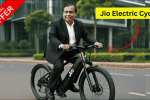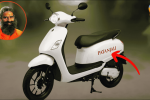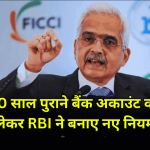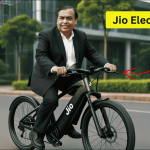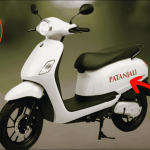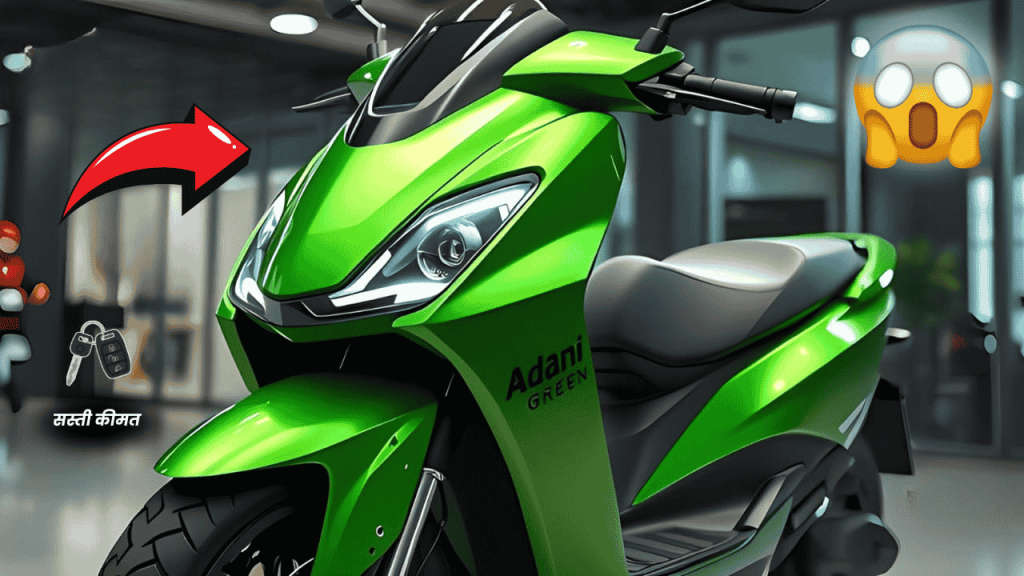
India’s electric vehicle landscape is transforming rapidly as manufacturers race to develop e-scooters with longer ranges, advanced features, and competitive pricing. With rising fuel costs and growing environmental consciousness, the demand for electric scooters continues to surge, especially in urban areas where commuters seek efficient, sustainable alternatives to traditional petrol vehicles.
The Evolution of Range in Electric Scooters
One of the most significant developments in the electric scooter market has been the steady improvement in battery technology, resulting in extended range capabilities. When electric scooters first entered the mainstream Indian market, most offerings provided ranges between 60-80 kilometers per charge. Today, premium models boast impressive ranges exceeding 200 kilometers, and future models are expected to push this boundary even further.
The quest for longer range is driven by consumer needs to overcome “range anxiety” – the fear of being stranded with a depleted battery. As battery technology advances and becomes more affordable, manufacturers are now focusing on creating electric scooters that can match or even exceed the range of traditional petrol scooters.
Current Market Leaders in High-Range E-Scooters
Several companies have already made significant strides in developing high-range electric scooters for the Indian market:
| Company | Model | Range (km) | Battery Capacity | Price Range (₹) |
|---|---|---|---|---|
| Simple Energy | Simple One | Up to 212 | 5 kWh | 1.45-1.5 Lakh |
| Ola Electric | S1 Pro Gen 2 | Up to 195 | 4 kWh | 1.3-1.5 Lakh |
| Ather Energy | 450X | Up to 150 | 3.7 kWh | 1.3-1.45 Lakh |
| TVS | iQube | Up to 140 | 3.4 kWh | 1.1-1.4 Lakh |
| Bajaj | Chetak | Up to 126 | 3 kWh | 1.2-1.35 Lakh |
| Hero Electric | Optima | Up to 122 | 2.9 kWh | 0.85-1.15 Lakh |
These established players continue to innovate and improve their offerings, creating a competitive landscape that benefits consumers through better features and more affordable pricing.
The Next Frontier: 300+ Kilometer Range
While current premium e-scooters typically offer ranges between 120-220 kilometers, several startups and established companies are working on next-generation models that aim to break the 300-kilometer barrier. This development would be revolutionary for the Indian market, potentially eliminating range anxiety entirely for most urban and inter-city commuters.
Let’s examine what factors might enable such extended ranges and what consumers can expect from these future high-performance models:
Key Technological Advancements
| Technology | Current State | Future Potential | Impact on Range |
|---|---|---|---|
| Battery Density | 160-200 Wh/kg | 300-350 Wh/kg | +40-50% range increase |
| Cell Chemistry | Lithium-ion NMC/LFP | Solid-state batteries | +80-100% range increase |
| Motor Efficiency | 85-90% efficient | 95-98% efficient | +10-15% range increase |
| Regenerative Braking | Basic recovery | Advanced AI-optimized systems | +15-20% range increase |
| Weight Reduction | Steel/aluminum frames | Carbon fiber/composite materials | +10-15% range increase |
| Aerodynamics | Basic design | Wind-tunnel optimized | +5-10% range increase |
These technological improvements, when combined, could potentially double the range of current electric scooters without significantly increasing the battery size or weight.
Premium Features Expected in High-Range Models
Future high-range electric scooters are likely to include premium features that justify their position in the market. These features not only enhance the user experience but also optimize performance and extend battery life:
| Feature Category | Expected Implementations | Consumer Benefit |
|---|---|---|
| Smart Connectivity | Mobile app integration, GPS tracking, remote diagnostics | Convenience and security |
| Battery Management | AI-optimized usage, temperature control, battery health monitoring | Extended battery life and performance |
| Performance Modes | Eco, City, Sport, Custom riding profiles | Range or power as needed |
| Charging Solutions | Fast charging, portable chargers, battery swap compatibility | Reduced downtime |
| Safety Features | ABS, traction control, emergency braking, ADAS | Enhanced rider protection |
| Comfort & Convenience | Premium seating, adjustable suspension, spacious storage | Better riding experience |
| Display & Controls | Large TFT displays, haptic controls, voice commands | Intuitive interaction |
Economic Benefits of High-Range Electric Scooters
While premium electric scooters require a higher initial investment compared to their petrol counterparts, the long-term economic benefits are substantial, especially for models with extended ranges:
| Expense Category | Petrol Scooter (5 years) | High-Range Electric Scooter (5 years) | Savings |
|---|---|---|---|
| Initial Cost | ₹80,000-1,00,000 | ₹1,20,000-1,50,000 | -₹40,000 to -₹50,000 |
| Fuel/Charging | ₹1,50,000-1,80,000 | ₹20,000-25,000 | ₹1,30,000-1,55,000 |
| Maintenance | ₹40,000-50,000 | ₹15,000-20,000 | ₹25,000-30,000 |
| Insurance | ₹15,000-20,000 | ₹10,000-15,000 | ₹5,000 |
| Battery Replacement | N/A | ₹25,000-35,000 | -₹25,000 to -₹35,000 |
| Total Cost of Ownership | ₹2,85,000-3,50,000 | ₹1,90,000-2,45,000 | ₹95,000-1,05,000 |
These calculations demonstrate that over a five-year period, a high-range electric scooter could potentially save riders over ₹1 lakh in operating costs, despite the higher initial purchase price.
Environmental Impact
Beyond economic benefits, high-range electric scooters offer significant environmental advantages. A transition to electric mobility could substantially reduce urban pollution levels:
| Environmental Factor | Impact of One High-Range Electric Scooter (per year) |
|---|---|
| CO2 Emissions Reduced | 1.5-2 tonnes |
| Particulate Matter Reduced | 0.25 kg |
| NOx Emissions Reduced | 3.5 kg |
| Noise Pollution | 70-80% reduction |
| Fossil Fuel Consumption | 350-450 liters of petrol saved |
The cumulative effect of widespread electric scooter adoption would contribute significantly to improved air quality in India’s cities and reduced carbon emissions nationally.
Challenges for Mass Adoption
Despite the promising outlook, several challenges must be addressed before high-range electric scooters can achieve mass adoption:
| Challenge | Current Status | Potential Solutions |
|---|---|---|
| Charging Infrastructure | Limited, mostly in urban centers | Public-private partnerships for nationwide charging networks |
| Initial Cost | 30-50% higher than petrol equivalents | Government incentives, affordable financing options |
| Battery Lifecycle | 5-7 years before replacement | Battery recycling programs, improved cell technology |
| Grid Capacity | Strained during peak hours | Smart charging, renewable energy integration |
| Consumer Awareness | Growing but limited | Educational campaigns, test ride programs |
| After-sales Service | Developing network | Standardized training, mobile service options |
Industry leaders, government agencies, and other stakeholders are actively working to address these challenges, creating a more conducive environment for electric mobility adoption.
Future Outlook: What Consumers Can Expect
As technology advances and economies of scale improve, consumers can expect:
- More Affordable Options: High-range electric scooters will gradually become more affordable, with potential entry-level models offering 200+ km range for under ₹1 lakh within the next 2-3 years.
- Diversified Offerings: Different segments including budget, family, performance, and luxury electric scooters will emerge to cater to various consumer needs.
- Enhanced Infrastructure: Charging stations will become ubiquitous in urban areas, and battery-swapping networks may provide an alternative solution for quick “refueling.”
- Vehicle-to-Grid Integration: Future electric scooters may work as mobile power banks, capable of feeding energy back into the grid during peak demand hours.
- Advanced Connectivity: AI-powered predictive maintenance, route optimization, and rider-assistance features will become standard on premium models.
Frequently Asked Questions
Q1: How reliable are the range claims made by electric scooter manufacturers?
A: Manufacturer-stated ranges are typically achieved under ideal test conditions. Real-world ranges can vary by 20-30% depending on riding style, terrain, weather conditions, and payload. Most manufacturers now provide both ideal and realistic range estimates to set appropriate expectations. Consumers should look for ARAI-certified range figures when comparing different models.
Q2: What happens if my electric scooter runs out of charge while riding?
A: Modern high-range electric scooters come equipped with multiple safeguards, including reserve power modes that activate when the battery level drops below a certain threshold. These modes limit speed and power to maximize remaining range. Additionally, most premium models include roadside assistance services, mobile charging options, and integration with nearby charging station maps through their companion apps.
Q3: How does the charging time compare for high-range electric scooters?
A: Standard charging times for high-range electric scooters with larger batteries (3-5 kWh) range from 4-6 hours with regular chargers. However, most premium models now support fast charging options that can deliver 80% charge in 1-2 hours. Some manufacturers are also exploring battery-swapping technologies that could reduce “refueling” time to just a few minutes, comparable to filling a petrol tank.
Q4: Are high-range electric scooters worth the premium price compared to standard models?
A: The value proposition depends on individual usage patterns. For daily commuters covering 40+ kilometers or riders who make occasional longer trips, high-range models offer significant advantages in terms of convenience and reduced charging frequency. The premium price typically also includes better components, more advanced features, and longer warranty periods. For urban riders with access to regular charging and shorter commutes, standard range models may offer better value.
Conclusion
The future of electric mobility in India looks promising, with high-range electric scooters leading the charge toward a more sustainable transportation ecosystem. As battery technology continues to evolve and costs decrease, consumers can expect increasingly capable electric scooters that not only match but exceed the capabilities of traditional petrol vehicles.
For environmentally conscious consumers and tech enthusiasts, these advanced electric scooters represent an exciting opportunity to embrace the future of personal transportation while enjoying significant long-term economic benefits. With ranges approaching and potentially exceeding 300 kilometers, the next generation of electric scooters will eliminate the final barriers to widespread adoption, creating a cleaner, quieter, and more efficient urban mobility landscape.
While specific rumors about new market entrants should be approached with caution until officially confirmed, the overall trajectory of the electric scooter market in India points toward continued innovation, improved performance, and eventually, more affordable pricing for high-range models. Consumers considering a new two-wheeler purchase would be well-advised to explore the rapidly evolving electric options in this dynamic marketplace.


